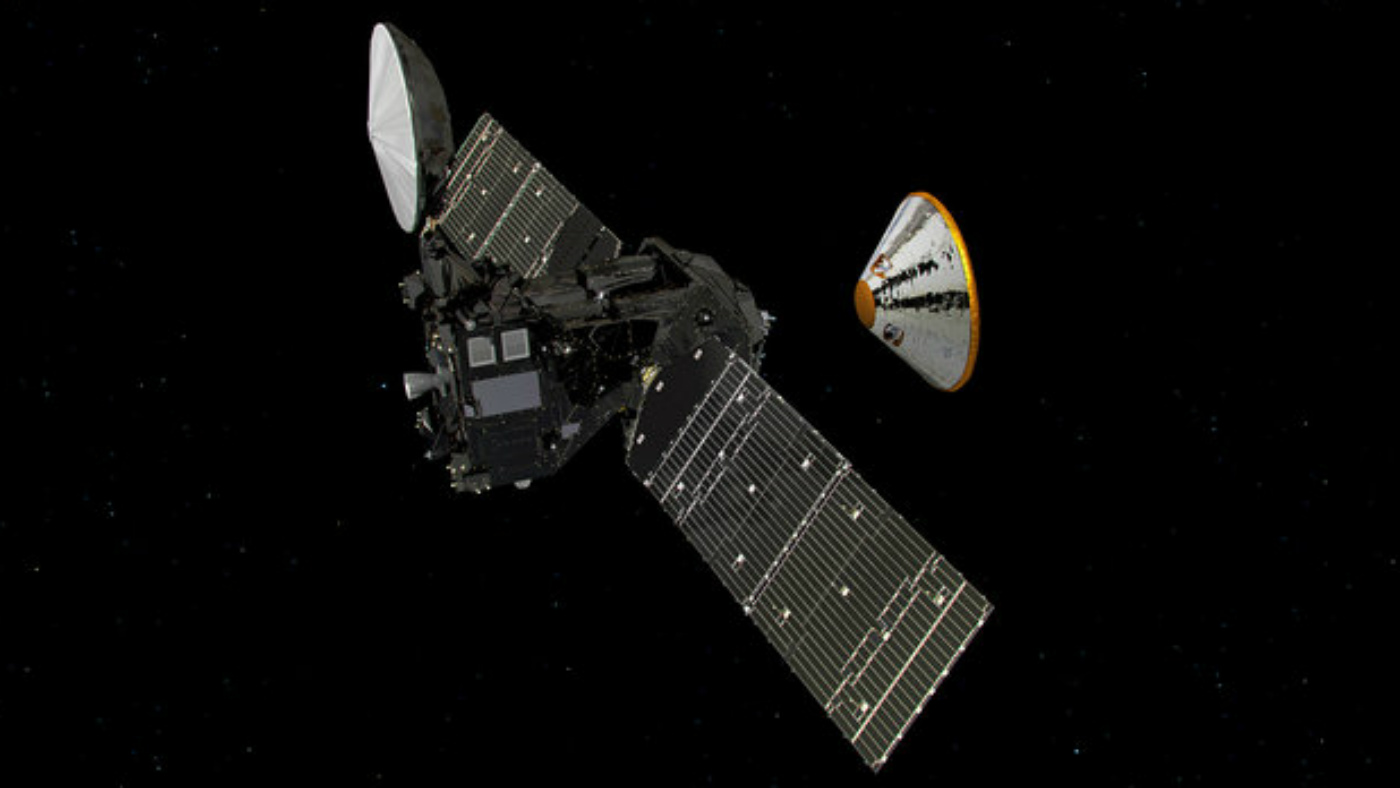ExoMars mission: Schiaparelli feared lost on Mars
European Space Agency waits for news from space probe after losing contact minutes before it was due to land

Scientists at the European Space Agency (ESA) are waiting for a signal from the Schiaparelli space probe after losing contact less than a minute before it was due to hit the surface of Mars.
"Grim-faced mission controllers peered at their monitors as the moment they expected the probe to call home came and went in silence", The Guardian says.
"It's clear this is not a good sign," said said Paolo Ferri, the head of mission operations at the European Space Operations Centre in Darmstadt.
The Week
Escape your echo chamber. Get the facts behind the news, plus analysis from multiple perspectives.

Sign up for The Week's Free Newsletters
From our morning news briefing to a weekly Good News Newsletter, get the best of The Week delivered directly to your inbox.
From our morning news briefing to a weekly Good News Newsletter, get the best of The Week delivered directly to your inbox.
Schiaparelli manager Thierry Blancquaert told AFP: "The lander touched down, that is certain.
"Whether it landed intact, whether it hit a rock or a crater or whether it simply cannot communicate, that I don't know."
Scientists have called in other satellites around the Red Planet to try and communicate with the craft, including a US satellite that "called out to Schiaparelli to try to get it to respond", says the BBC.
There was better news from the probe's "mothership", the trace gas orbiter, which was placed in an eccentric orbit around Mars and will spend the next few years testing gas levels, including methane, around the planet.
A free daily email with the biggest news stories of the day – and the best features from TheWeek.com
Methane holds a number of clues as to the state of Mars and "may even hint at the existence of life on the planet today", says the BBC.
ExoMars mission: Lander due to touch down on Mars
19 October
A probe is on course to become the first European spacecraft to successfully land on Mars, potentially opening the door to a future crewed mission.
The entry, descent and landing demonstrator module (EDM), also known as the Schiaparelli lander, is one of two spacecraft heading for the Red Planet as part of the ExoMars mission, a joint undertaking between the European Space Agency (ESA) and Roscosmos, the Russian space agency.
The second spacecraft involved in the mission, the trace gap orbiter (TGO) will not touch down but will attempt to enter the planet's orbit, where it will search for trace amounts of gas in the atmosphere.
This afternoon, scientists anxiously awaited a signal to confirm the Schiaparelli lander, which had entered a powered-down state to save energy, had awoken on schedule for its descent.
Finally, at 3pm BST, the ESA tweeted that the giant metrewave radio telescope, near Pune, in India, had picked up a signal from Schiaparelli.
It was on course to touch down at around 4pm BST, although confirmation of the mission's success is expected to take several hours, The Guardian reports.
Schiaparelli's complex landing procedure, which will be aided by a parachute to slow its fall, is the final phase of a journey which began seven months ago, when both spacecraft were launched on a Proton rocket from the Baikonur Cosmodrome in Kazakhstan.
The TGO and Schiaparelli successfully parted ways three days ago to begin their separate missions, which could ultimately pave the way to humans landing on Mars.
Schiaparelli's mission is to assess hydrogen levels under the surface of the planet that "could help pinpoint deposits of ice that later crewed missions can use as a water source", TechCrunch reports.

Infographic by www.statista.com for TheWeek.co.uk.
-
 The week’s best photos
The week’s best photosIn Pictures A new year dawns, a volcano yawns, and more
-
 8 incredible destinations to visit in 2026
8 incredible destinations to visit in 2026The Week Recommends Now is the time to explore Botswana, Mongolia and Sardinia
-
 Wave of cancellations prompt Kennedy Center turmoil
Wave of cancellations prompt Kennedy Center turmoilIN THE SPOTLIGHT Accusations and allegations fly as artists begin backing off their regularly scheduled appearances
-
 What will happen in 2026? Predictions and events
What will happen in 2026? Predictions and eventsIn Depth The new year could bring peace in Ukraine or war in Venezuela, as Donald Trump prepares to host a highly politicised World Cup and Nasa returns to the Moon
-
 How Bulgaria’s government fell amid mass protests
How Bulgaria’s government fell amid mass protestsThe Explainer The country’s prime minister resigned as part of the fallout
-
 Femicide: Italy’s newest crime
Femicide: Italy’s newest crimeThe Explainer Landmark law to criminalise murder of a woman as an ‘act of hatred’ or ‘subjugation’ but critics say Italy is still deeply patriarchal
-
 Brazil’s Bolsonaro behind bars after appeals run out
Brazil’s Bolsonaro behind bars after appeals run outSpeed Read He will serve 27 years in prison
-
 Americans traveling abroad face renewed criticism in the Trump era
Americans traveling abroad face renewed criticism in the Trump eraThe Explainer Some of Trump’s behavior has Americans being questioned
-
 Nigeria confused by Trump invasion threat
Nigeria confused by Trump invasion threatSpeed Read Trump has claimed the country is persecuting Christians
-
 Sanae Takaichi: Japan’s Iron Lady set to be the country’s first woman prime minister
Sanae Takaichi: Japan’s Iron Lady set to be the country’s first woman prime ministerIn the Spotlight Takaichi is a member of Japan’s conservative, nationalist Liberal Democratic Party
-
 Russia is ‘helping China’ prepare for an invasion of Taiwan
Russia is ‘helping China’ prepare for an invasion of TaiwanIn the Spotlight Russia is reportedly allowing China access to military training